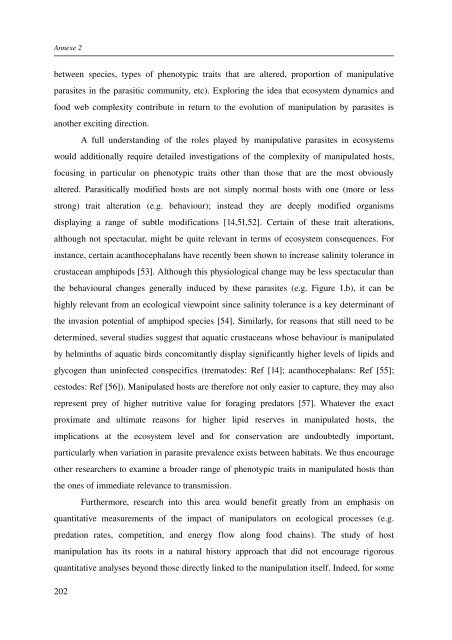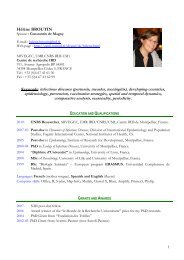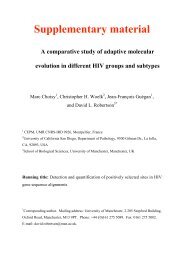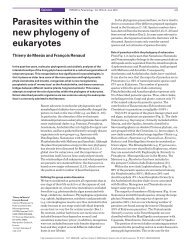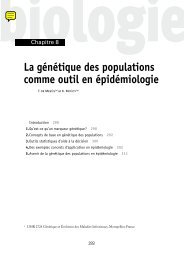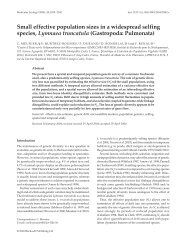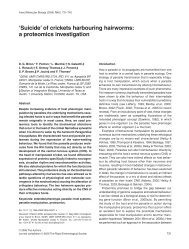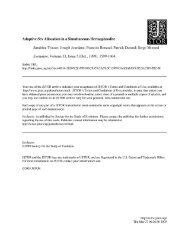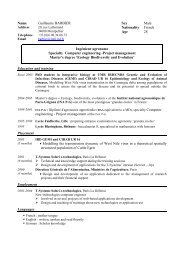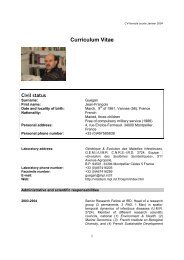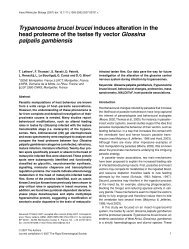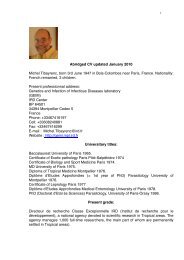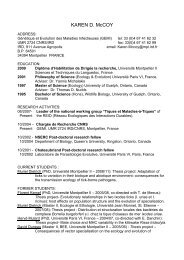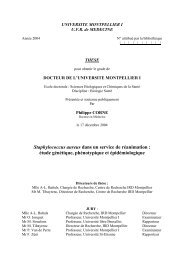écologie des virus influenza aviaires en Camargue - IRD
écologie des virus influenza aviaires en Camargue - IRD
écologie des virus influenza aviaires en Camargue - IRD
Create successful ePaper yourself
Turn your PDF publications into a flip-book with our unique Google optimized e-Paper software.
Annexe 2betwe<strong>en</strong> species, types of ph<strong>en</strong>otypic traits that are altered, proportion of manipulativeparasites in the parasitic community, etc). Exploring the idea that ecosystem dynamics andfood web complexity contribute in return to the evolution of manipulation by parasites isanother exciting direction.A full understanding of the roles played by manipulative parasites in ecosystemswould additionally require detailed investigations of the complexity of manipulated hosts,focusing in particular on ph<strong>en</strong>otypic traits other than those that are the most obviouslyaltered. Parasitically modified hosts are not simply normal hosts with one (more or lessstrong) trait alteration (e.g. behaviour); instead they are deeply modified organismsdisplaying a range of subtle modifications [14,51,52]. Certain of these trait alterations,although not spectacular, might be quite relevant in terms of ecosystem consequ<strong>en</strong>ces. Forinstance, certain acanthocephalans have rec<strong>en</strong>tly be<strong>en</strong> shown to increase salinity tolerance incrustacean amphipods [53]. Although this physiological change may be less spectacular thanthe behavioural changes g<strong>en</strong>erally induced by these parasites (e.g. Figure 1.b), it can behighly relevant from an ecological viewpoint since salinity tolerance is a key determinant ofthe invasion pot<strong>en</strong>tial of amphipod species [54]. Similarly, for reasons that still need to bedetermined, several studies suggest that aquatic crustaceans whose behaviour is manipulatedby helminths of aquatic birds concomitantly display significantly higher levels of lipids andglycog<strong>en</strong> than uninfected conspecifics (tremato<strong>des</strong>: Ref [14]; acanthocephalans: Ref [55];cesto<strong>des</strong>: Ref [56]). Manipulated hosts are therefore not only easier to capture, they may alsorepres<strong>en</strong>t prey of higher nutritive value for foraging predators [57]. Whatever the exactproximate and ultimate reasons for higher lipid reserves in manipulated hosts, theimplications at the ecosystem level and for conservation are undoubtedly important,particularly wh<strong>en</strong> variation in parasite preval<strong>en</strong>ce exists betwe<strong>en</strong> habitats. We thus <strong>en</strong>courageother researchers to examine a broader range of ph<strong>en</strong>otypic traits in manipulated hosts thanthe ones of immediate relevance to transmission.Furthermore, research into this area would b<strong>en</strong>efit greatly from an emphasis onquantitative measurem<strong>en</strong>ts of the impact of manipulators on ecological processes (e.g.predation rates, competition, and <strong>en</strong>ergy flow along food chains). The study of hostmanipulation has its roots in a natural history approach that did not <strong>en</strong>courage rigorousquantitative analyses beyond those directly linked to the manipulation itself. Indeed, for some202


